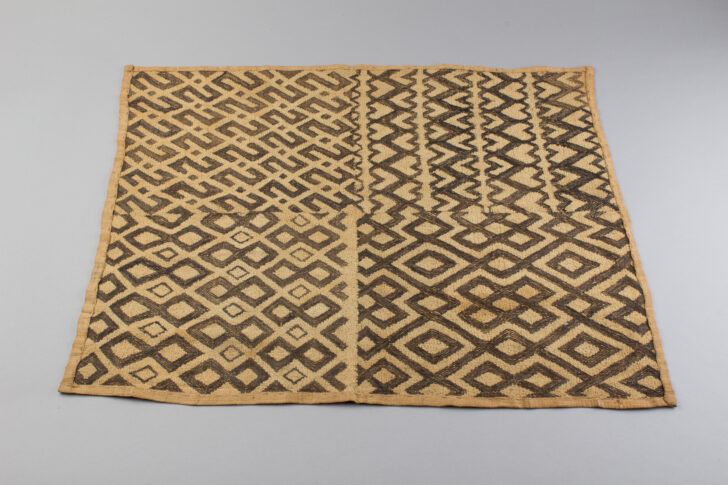Raffia Textile Panel
Kuba

Description
Subject Matter:
The Kuba peoples are renowned for their elaborate, geometrical surface design, such as applied to this cloth. Also referred to as cut pile, raffia cloth, Shoowa textile or Kasai velvet (Velours du Kasai), their plush “velvet” texture is achieved through the cut pile technique, where a sharp knife is used to gently clip off the tufts of the palm threads.
In the 19th century, decorated raffia cloth was used as a marker of prestige, as currency, to pay tribute, settle legal disputes, and in public displays such as the funerals of high-ranking titleholders. Additionally, they were often used as initiation objects during ceremonial rites of passage. The textiles are generally covered with geometric patterns, similar to patterns found on Kuba basketry, woodwork, sculpture, and female body scarifications. More recently industrial cloth has been used as a replacement.
References:
Monni Adams, Kuba Embroidered Cloth, African Arts, 1978
Daniel Biebuyck, The Arts of Zaire, 1985
Georges Meurant, African Textiles from the Kingdom of Kuba, 1986
Roy Sieber, African Textiles and Decorative Arts, 1972
Physical Description:
A square panel with tan hemmed edges. The panel's design is divided into four quadrants, described per image orientation: the upper right quadrant consists of repeating alternated brown and tan chevrons; upper left quadrant consists of repeating brown "S"-shaped lines separated by brown square dots; lower left and right quadrants consist of varying alternated brown and tan diamond patterns.
Usage Rights:
If you are interested in using an image for a publication, please visit https://umma.umich.edu/request-image/ for more information and to fill out the online Image Rights and Reproductions Request Form.